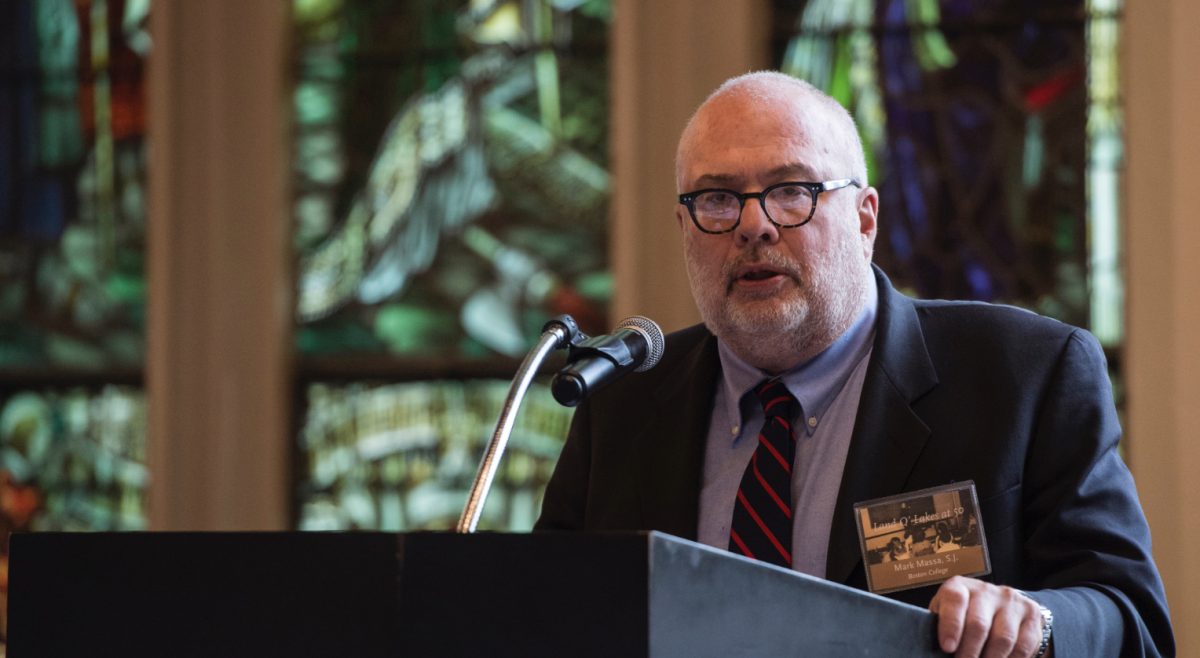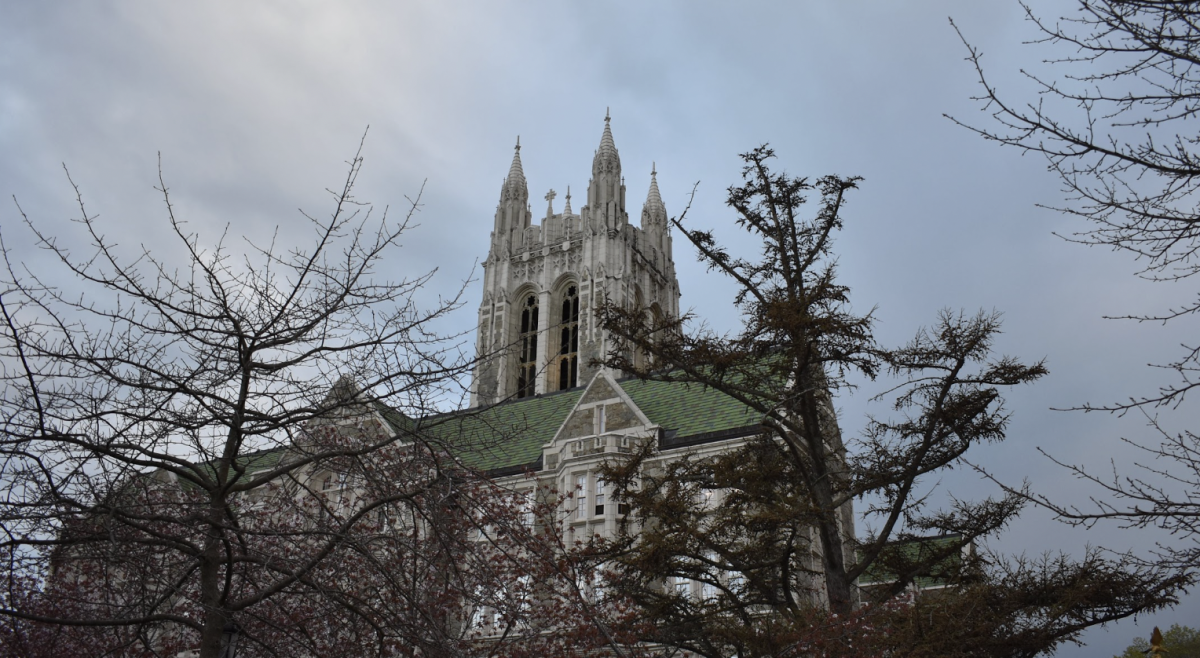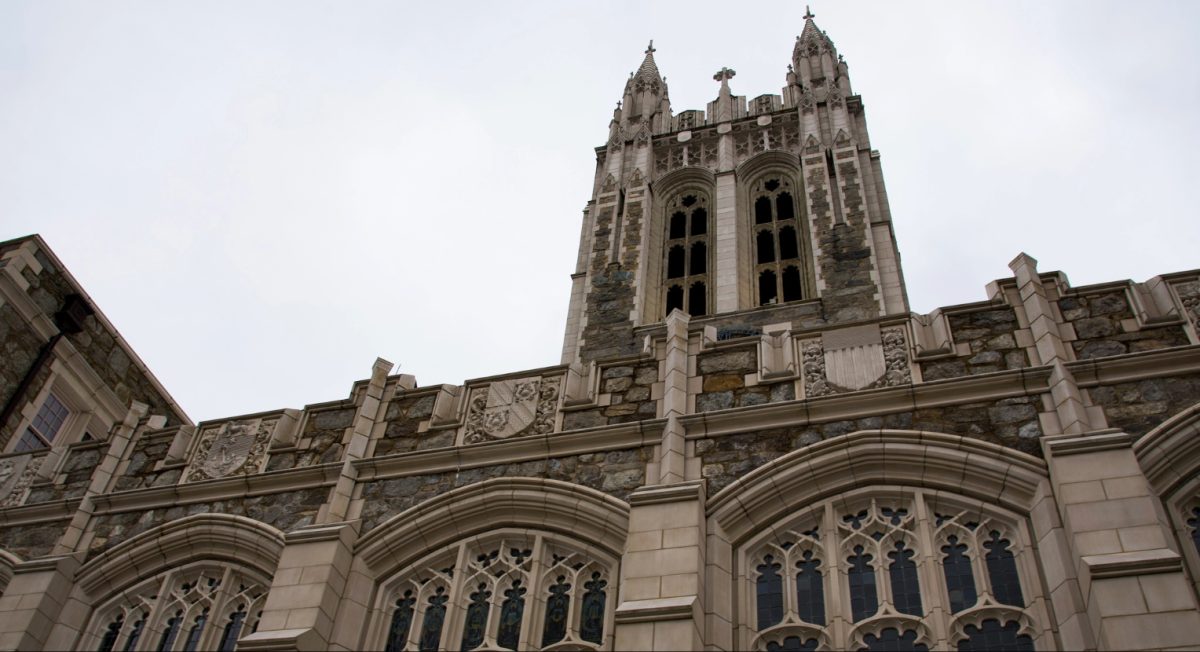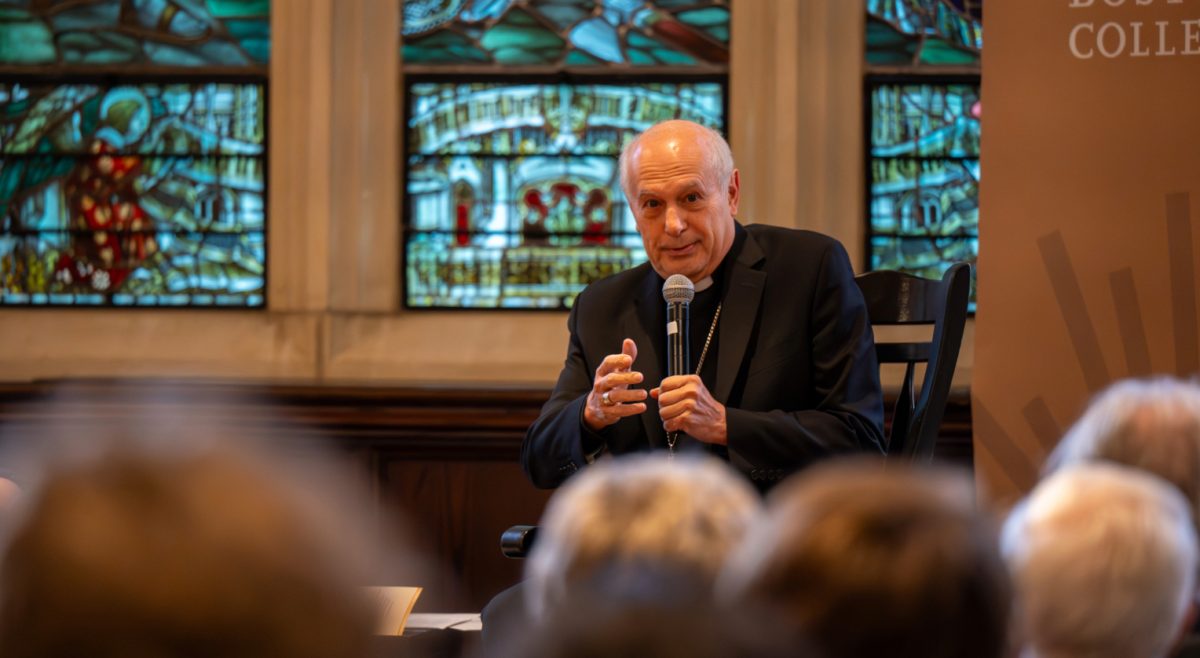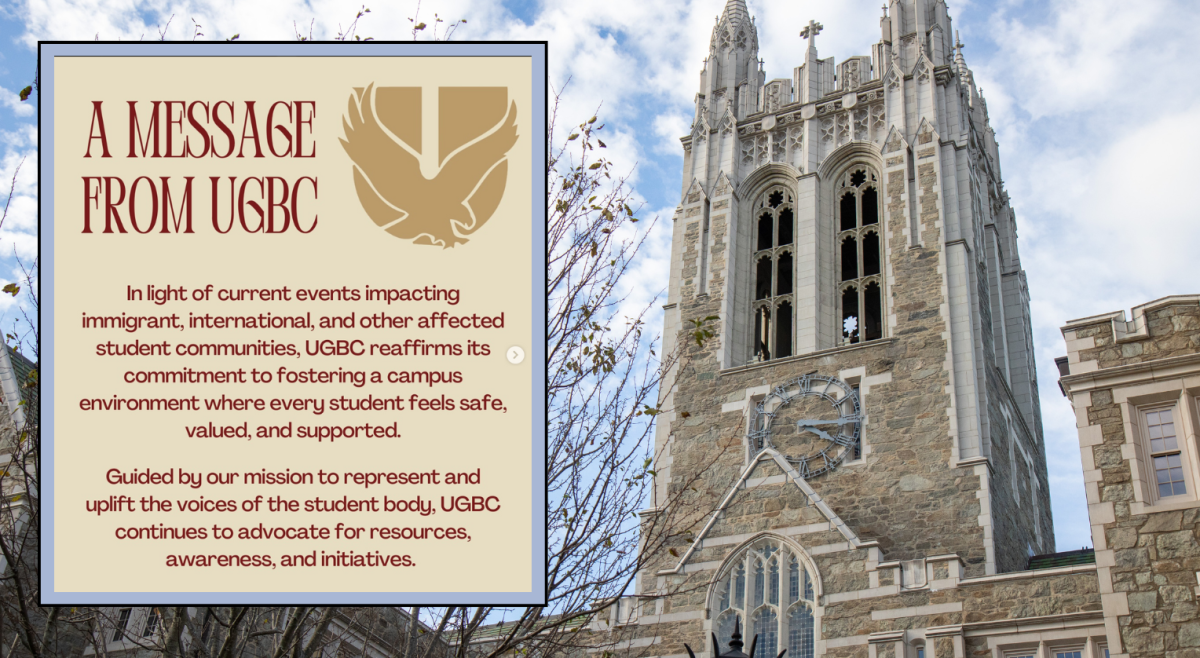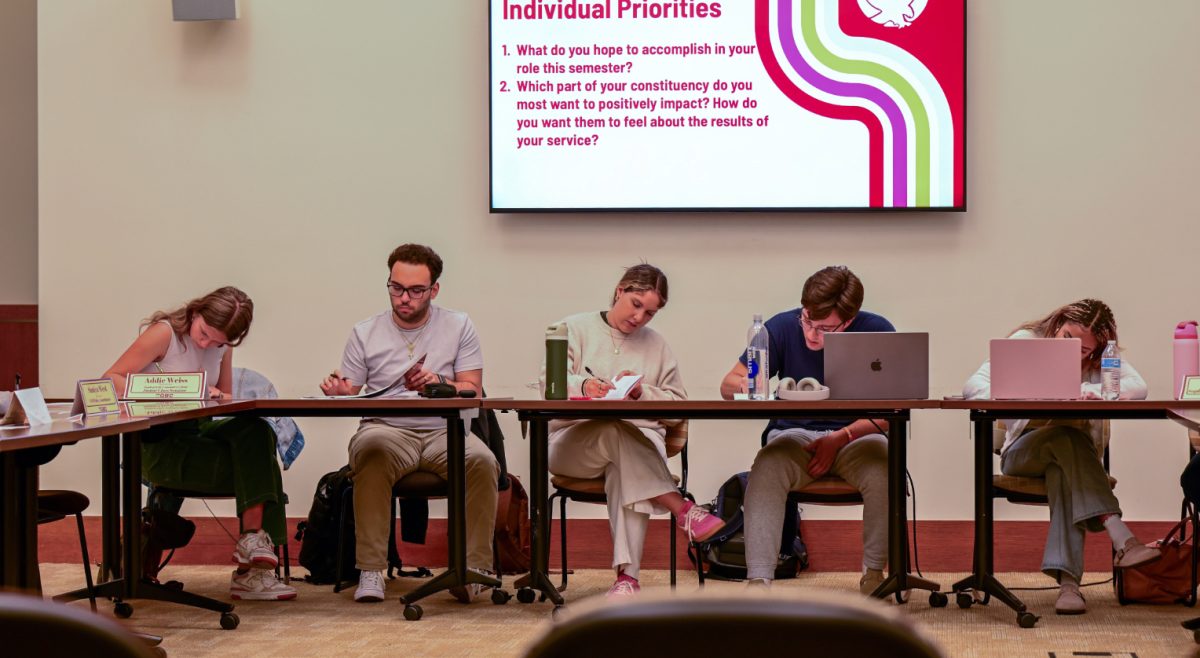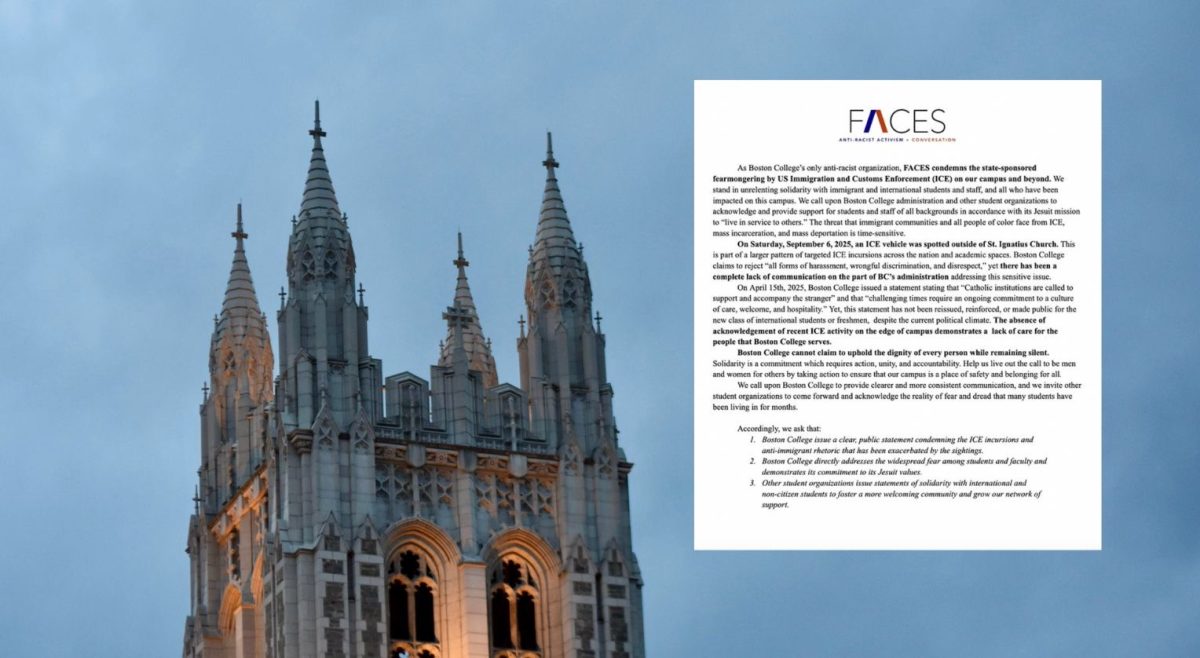Boston College accepted 9,200 students out of 28,500 applications for admission to the Class of 2021, for an acceptance rate of 32 percent, Director of Undergraduate Admission John Mahoney said in an interview Monday. Last year’s rate was also 32 percent.
The accepted number combines the early action admission pool with the regular decision pool. In December, 2,900 students were admitted early action out of 9,000 applicants, for an early action acceptance rate of 33 percent.
Students accepted to the class of 2021 had a mean SAT of over 1400 on the new 1600-point scale, and a mean ACT of 33. SAT scores ranged from 1360 in the 25th percentile to 1480 in the 75th percentile, and ACT scores ranged from 32 in the 25th percentile to 34 in the 75th percentile.
The 28,500 total applications were down 1 percent from last year’s total. Early action applications, however, increased this year from 8,500 in 2015 to 9,000 in 2016, a 5 percent rise.
Students were admitted from 50 states and 61 foreign countries. Thirty-four percent of accepted students identify as AHANA—32 percent of the Class of 2020 identifies as AHANA or are international students of color. Mahoney said AHANA applications have also increased.
This year’s numbers were largely similar to past years.
“When you’re even in applications, as we are, there aren’t really powerful trends to report upon,” Mahoney said.
That said, a couple of numbers stood out. The Connell School of Nursing, for example, saw a 7 percent rise in applicants this year. Mahoney said CSON’s level of selectivity has increased in the last couple of years. Men still make up about 1 percent of applicants to CSON, Mahoney said.
“It’s one of those professions that is unjustifiably stereotyped as a female profession, so we’re just not seeing the volume still,” Mahoney said.
Geographically, the applicant breakdown stayed mostly the same. Applications from California, however, decreased 7 percent this year, although Mahoney said the state has been seeing a dip in high school graduates. International applicants are down 6 percent, which Mahoney attributed to a decline in applicants from China, which colleges and universities are seeing around the U.S.
BC accepted both the new SAT and the old, 2400-point version, but Mahoney said a relatively small percentage of applicants opted to submit the old version. There was some talk that raw scores might be a little higher on the 1600-point scale, but Mahoney said BC didn’t really see that come true.
“We didn’t really see [the new version] as a radical shift in terms of using the tests as part of the evaluation,” he said.
Admissions counselors effectively worked two days in one on Monday, March 13 in order to get decisions out last week, Mahoney said, because of the blizzard last Tuesday. Decisions are out a little earlier this year because Easter falls in mid-April, and admissions will be unable to hold yield programming for about four days next month.
Between April 1 and April 4, admissions staff members will travel to 19 different cities for admitted student receptions. April 8 is the Keith A. Francis Memorial Weekend yield programming for admitted AHANA students, a huge event for admissions, and April 9 is Admitted Eagle Day.
“I would say now the real work starts, because we’ve accepted some extraordinary students, and they’re being accepted by some other great schools, as well,” Mahoney said.


